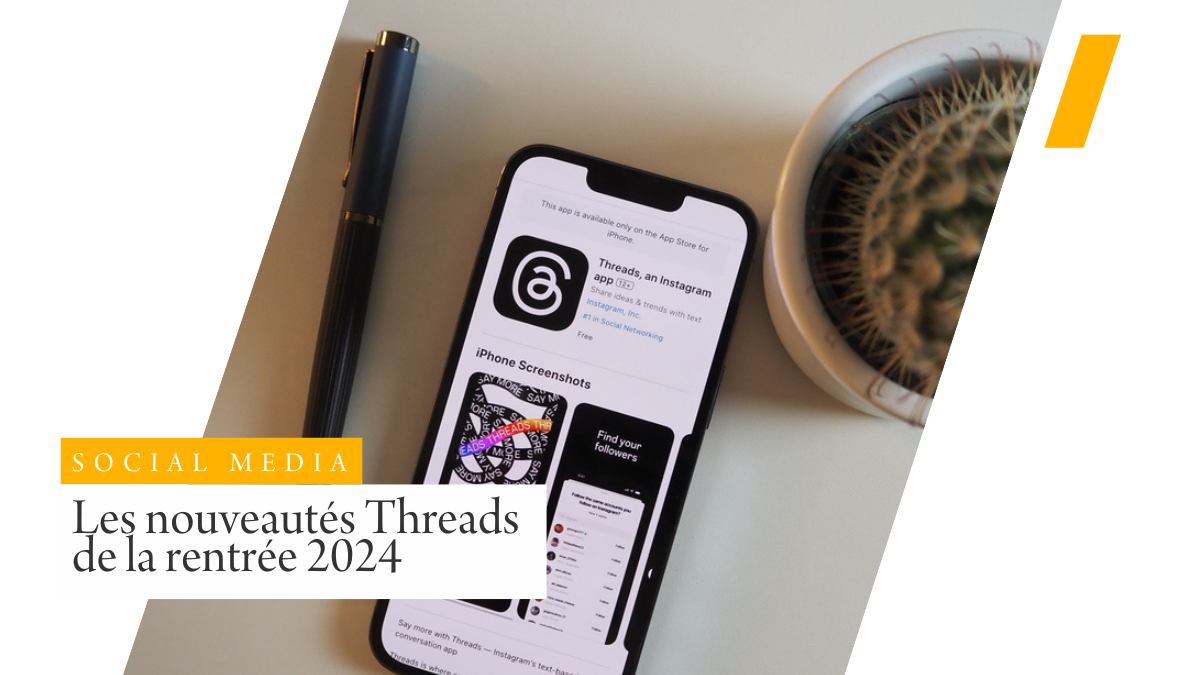Mastering the key stages of territorial marketing is no pipe dream.
Simple, basic principles, like an Orelsan song, can be implemented.
There’s one obvious idea to bear in mind: there’s no point in skipping steps to get where you want to go. You need to have a solid foundation for understanding the 3 pillars that will help you stand out from the crowd: make yourself known, make yourself loved and, finally, make yourself act.
This in itself is DNA, nothing prehistoric, just logical.
We put 3 questions to Jean-Baptiste Treboul, Director of ESPACES tourisme & loisirs, to help you better understand what Espaces is all about, and his vision of the subjects it covers.
What is Espaces le magazine?
 Revue Espaces has been a trade publication specializing in tourism and leisure for over 50 years.
Revue Espaces has been a trade publication specializing in tourism and leisure for over 50 years.A bimonthly publication, it offers in-depth articles and features on developments and issues in tourism.
Articles are written by experts, researchers and tourism professionals.
All published articles (over 6000) are available as PDF downloads for subscribers.
What angle and subject are covered in this latest issue?
What’s your take on the subject?
Strategies, tools and markets must be analyzed in great detail, as part of a brand platform rethought in light of the impact of digital technology.
Step 1 – Building your brand
All too often, we forget that a territorial brand lives and breathes, and that it is in constant competition with the attractiveness of its territory, which means that from one day to the next, a tourist’s choice can change.
It lives with you, you animate it, you shape it, it must be your child.
Defining values, tone of voice, positioning, brand language, etc. are the key to creating a good brand platform. “By defining its elements, you consolidate its personality. Like a friend, it’s what makes you love him, want to see him again and, above all, want to stick with him.
To understand, grasp and work with it, you need to ask yourself the right questions: Who are you?
What is your promise?
What are your missions?
How should you express yourself?
What lexicon should I use to talk about it?
 Step 2 – Defining your target
Step 2 – Defining your target
Families, sports enthusiasts, seniors, millennials, local, French, global… They are the nerve center of your tourism economy.
They are defined by the attractiveness of your territory and the offer you can make to them.
Whether you want to consolidate or win them over, the most important thing is to identify their interests and behaviors, and what will make the most of them.
They are at the heart of your strategic editorial thinking, content production, choice of communication channels and, ultimately, the communicative decisions in your action plan.
To help you define your target, here are a few key points to consider:
- Who are they?
Are they to be consolidated or conquered?
For what reasons? - What are their consumption habits and what interests them?
- What will appeal to them, and how should we position ourselves in relation to our target market?
Step 3 – Define your objectives
In marketing, there are two ways of measuring your performance: ROI (Return on Investment) and ROE (Return on Engagement).
- Return on Investment measures the financial impact of your campaigns: increased bookings, participation in a festival, development of a customer base that consumes (insofar as we can track sales, with demographic data).
For this KPI, you have a financial measurement obligation: without this element, your results won’t be sufficiently measurable for your analysis.
- Return on engagement is a KPI that allows you to identify your target’s actions, whether on social networks, on site with tourist movements, or with the positive impact your brand can have in virality.
In territorial marketing, engagement is often the KPI on which actions are most measured: analyze the audience reached, measure the virality of your communication, the impact you’ve managed to generate…
But let’s be real: the aim of all destinations is to improve their tourist flows to high-potential targets.
The aim is to move from destination appeal to impactful marketing appeal for the targets you want to reach.
The best way to get immediate results from your campaigns is generally throughUGC (User Generated Content) campaigns.
To do this, you need to provide specific hashtags for reuse, create Instagrammable spots, and give your tourists the chance to help create their own content: in this way, they become your own ambassadors.
See for yourself: have you ever taken a photo of yourself with the large letters of a destination’s name, like in Cannes or Lyon, or seen such a photo on social networks?
This demonstrates the virality and power of this kind of operation, which originated in Amsterdam, a pioneer of the concept.

Step 4 – Define your communication channels
Today, there are multiple communication channels and social platforms, and unfortunately none of them are magic.
Learning how to define them is above all a matter of knowing how to make the right choices to determine what will reach your ultimate target with the right words, at the right time and with impact.
Reaching seniors on Instagram, highlighting a millennials’ offer on Facebook, reaching a luxury target on Tiktok… In short, do you see what I’m getting at?

Where is your target market?
A simple question, and one that’s generally easy to answer.
Whether offline (bus, metro, events, boxes…) or online (social networks, influencers, social network advertising, website design, SEO), it’s important to define the media that will enable you to reach your targets with your messages, depending on where they are most connected.
But there are some basics to master:
- Search Engine Optimization (SEO): Your trump card for low-cost, long-tail traffic that will help you reach your targets all year round.
- Press relations: This will enable you to reach a broad target audience with a large readership.
- Social networks & sponsored campaigns: To communicate effectively with your communication targets with content that encourages interaction.
- Newsletters: to stimulate your database and CRM base.
Ideally, other channels that depend on an additional marketing budget to ensure promotional missions: trade shows, meetings, influencers, TV promotion, google ads, events…
The channel meets your primary need for targeting and positioning, trends evolve, new channels are built, but just because they exist and are trendy doesn’t mean you’ll become hasbeen if you don’t position yourself.
It’s important to be present on the web in order to maintain your brand image and interact with web users, but it’s more important to be present on the right platforms.
It’s not a good idea to be present on all platforms and then not be active on them, or to be present when your target audience isn’t there.
Careful selection of channels is therefore essential to establish a coherent positioning on the web.
Step 5 – Benchmark, get inspired, understand competitive pressure
It’s essential to understand the ecosystem in which your brand wants to operate: what are my competitors doing well, and where can I expand?
It’s not an easy task, but it’s an obligation: to be inspired, to understand trends, to decipher them, it’s important to carry out this mission on a daily basis.
We give you the green light to spend even more time on social networks at work!

Step 6 – Storytelling
Telling stories creates your power of conviction: just as a presidential candidate, a parent to lull a child to sleep, or a lawyer to prepare a closing argument, your only aim is to create, convince and convey emotion.
How will you encourage visitors to choose your destination?
Answering this question before generating stories helps you understand why content, communication and social media plans are necessary.
These plans strongly reinforce the destination brand and encourage strategic and creative thinking.
In addition, destinations should use storyboarding to find ways for their stories to stand out from others that may take place in closer locations or at lower prices.
In addition to attracting visitors, storytelling, particularly on social networks, can generate buzz and enthusiasm among partners and stakeholders in your economic fabric.
With a strategic content plan, prospective travelers will find themselves with a more targeted message and higher-quality calls to action for the attractiveness of the territory.
Step 7 – Create your content
The stakes are high when it comes to content creation.
As the saying goes, a picture is worth a thousand words and a thousand words are worth a picture, so content creation is about :
- Give the brand credibility in its sector by proving its expertise;
- Assert your own distinctive positioning;
- Increase brand awareness and visibility;
- Adopt a service approach by providing answers to your customers’ questions;
- Bypass web advertising campaigns and the adblocking phenomenon.
Content marketing is a long-term strategy that involves creating and distributing content that adds significant value to your brand’s prospects and customers.
This content will prove your expertise, highlight your values and your story, and entertain and educate your audience.
This marketing is a real growth lever.
This content enables you to educate, entertain and respond to your audience’s issues, thus proving your appeal.
Step 8 – Communicate
The most important step in communication is to design a “chestnut” in relation to each of the above-mentioned points, but above all one that takes into account your major events of the year, what drives your news, the high and low seasons, what you need to convey to your targets and, above all, the right moment to convey it.
From social content to blog posts, you’re probably juggling a ton of different creative work.
If you’re working with writers or influencers, you’re also dealing with relationships and deadlines that have to be met.
All this points to the need to create a content and communication calendar that you can realistically stick to.
Whether you’re building your own or taking advantage of a content calendar template, be sure to include the following elements in each calendar entry:
- Content type: blog post, social article, infographic, visitor guide, etc.
- Completion date: the date by which your content must be completed in order to be reviewed.
- Publication date: the date your content goes online
- Campaign: distinguish between owned (blog post, social post), earned (media publication, influencer campaign) or paid (social ad, print ad).
- Persona(s): define who your content is intended for
- Rights and credits: determine whether you have the appropriate authorizations and rights to your creations (think: UGC rights).
- Objective: what is the purpose of your content (brand awareness, conversions)?
- Cost: the amount associated with a content item
You have to take these steps, climb them, shape them, and succeed in making them your own for your brand, your development, and finally building a solid foundation for your marketing development.








